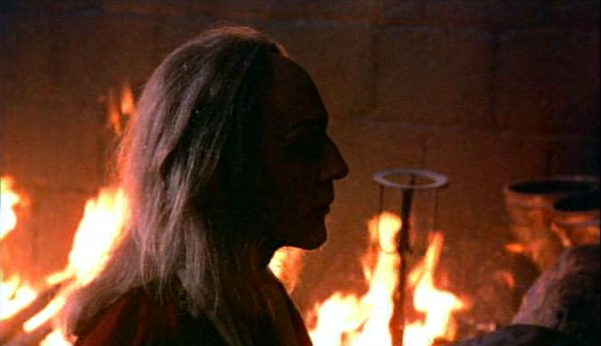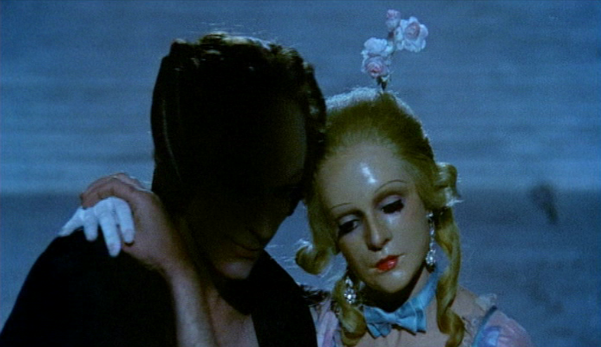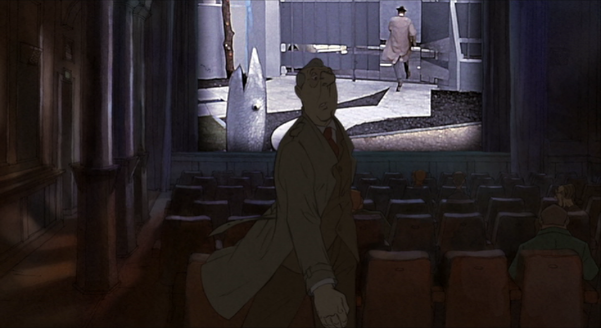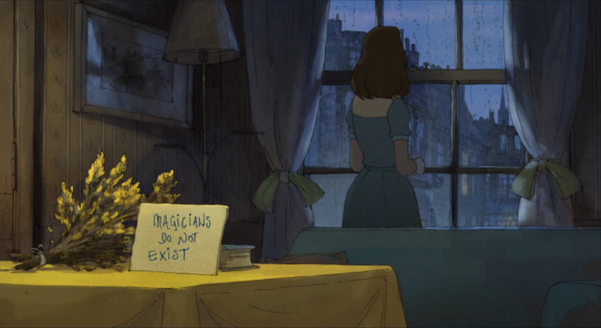
[Mary Marie, a no budget, erotically charged, DIY style new film by talented young filmmaker Alexandra Roxo, is premiering at the Brooklyn Film Festival on the 4th of June. I sat down with director/actor/writer Roxo along with the film's co-star and collaborator Alana Kearns-Green (via Skype) for a spirited chat.]
Congratulations on Mary Marie getting into Brooklyn Film Festival. I saw it last night and it was very impressive. You guys did a tremendous job.
Alexandra: Thank you. It was made on a penny.
Alana: A penny broken in half. (laughs)
Can you tell me a little bit about your artistic background and how you met and collaborated with each other?
Alana: Well, I went to NYU with Alex and we collaborated on two plays in college and many other projects. Then I went to LA to pursue acting, but Alexandra and I continued our artistic relationship. I've been involved in indie filmmaking for a while in LA.
Alexandra: I went to school for acting and started working at NYU Film Production Center and saw the creative possibilities in filmmaking. Then I started doing photography, to sort of transitioning into visual storytelling. Alana was the model of 90 percent of my work, because she was up for anything. I think it's important to have a collaborator who is that fearless. I'd go, "Ok, Alana, Take off all your clothes and crack this pomegranate in half with your hands and bite into it. Make sure the juice gets all over you." (While standing on a cliff on a brisk fall day). And she'd be, "Ok, let's go, let's go!" I'd tell her, "How about you lay down naked in this white water river holding a doll?" and she'd say, "I'm in!" I mean, not many people would be down for that. I think that attitude was very important for both of us as developing artists.
Alana: I owe a lot to Alexandra. It was her drive and passion that saw me through a lot of things we started. Through Mary Marie, I got to taste the artistic freedom, something I wouldn't have had otherwise.
Where did you shoot Mary Marie?
Alexandra: In Harrisburg, PA and Beavertown, PA.
The reason I ask is that the film is very small town Americana. Quite surprising knowing Alex's background a little.
Alana: I am actually from Pennsylvania and that's how we ended up shooting there. We shot in both of my homes where I grew up. That's how we got the hookup. I just told my family we were going to shoot a movie there for a month. (Laughs)
Alexandra: Luckily they're are not coming after me right now, because we moved a lot of furniture around and misplaced quite a few things. (Laughs) We had already done a photo shoot in the house in Beavertown and the place was very inspiring. It had that old timey, nostalgic, faraway feeling. The inspirations for the movie came from that first shoot, and being there together in a magical space. And it also had family history with Alana. We liked the pastoral, summery setting. I think that's where that Americana feel comes from, even though we both are kind of international- my dad is from Brazil and Alana's grandmother is Puerto Rican. So though we look like two normal American girls we both have a bit of Latina in us.
And that's how Mary Marie came about?
Alexandra: Yes, that's what happened with Mary Marie. We were at the stage where we were out of school for a bit and just wanted to make something happen. Neither one of us had any experience making a feature film before let alone had written a narrative or raising money for a film. We had absolutely no idea what we are getting into. No idea. (Laughs) I've heard people doing it for cheap, so I said to myself, "I don't see why we can't. We should at least try. The worst thing that can be is that we fail." We learned a lot from it. And that's how you develop as an artist. Or we just wait for the right time or the big money. You know? But we just dove right in.
How did you construct the film?
Alexandra: We wanted to act together in something. We just pulled archetypes from many different sources to create the characters. I'd write a scene and then Alana would write a scene. It was kind of an experiment we've never done before.
Alana: Alex had an idea. We took turns building on it. I was in LA, so we just wrote scenes and sent them back and forth to each other. And things started taking shape.
Alexandra: I don't know about how other films are made, but this was a giant collaboration among four of us: Alana, Rachel (Rachel Earnest, producer), Magela (Magela Crosignani, cinematographer, The Imperialists are Still Alive!) and me. Rachel and Magela were big part of writing and editing process of the film. Our first draft was very different than the actual movie. There were flashbacks and this complex sexual history of the girls. Magela and Rachel helped us edit the script. Their input was very important. They helped us really simplify to meet time and budget constraints.
Was it already decided that Alex would play Marie and Alana would play Mary?
Alana: I think from the beginning we knew whom we'd play and wrote the parts accordingly.
Did you ever think about switching the roles?
(Both laugh)
Alana: No, we've never thought about that.
Alexandra: Part Two!
Alana: Or was it Marie Mary?!
Alexandra, how was directing and acting at the same time?
Alexandra: We wanted to make the film on a super small scale believing that would give us a lot of freedom artistically, as well as be within our means. But the film crew grew a little bigger, and we had to sacrifice some room to improvise because of time constraints and sheer number of people on the set. You know, it can be distracting when you are lying in the bathtub naked, crying and there are 15 other people in the next room. As you know there are quite a bit of scenes where Alana and I are acting together, and since Rachel and Magela were involved in writing the film too, it was pretty natural they would step in some times (and that's why Rachel Earnest is credited as "additional direction" as well).
How was it being directed by Alexandra?
Alana: It was different than our one on one collaborations we've done over the years. The scope was bigger and there were time constraints. But since we've established the working relationship, it was quite easy. Of course there were some tough scenes but Alexandra was very encouraging and assuring and lead me where I needed to go.
Were there disagreements or fights?
Alana: Difficult challenges arise in any kind of collaborative process. Alex had to make executive decisions and vice versa. But it was really intense working like that, giving it all for 40 days.
Alexandra: It was 14 days of shooting, but we were there prepping prior to that. And you are looking at the clean up crew right here (pointing at herself and Alana). We really turned that place upside down. (laughs) Collaborations are hard. There were thing we needed to cut out. With time and money limits, you just had to make compromises. There are some scenes we really regret cutting, but in the end it was all worth it.
Can you tell me some of your influences?
Alana: Prior to the shoot, we started to compile lots of images and photos for visual ideas and aesthetics. We wanted to have a clear visual idea before the shooting started. It was always Alex's forte.
Alexandra: I love photography. I started gathering all sorts of references images, a lot of fashion photos that captured the feeling we wanted to create. I wanted to capture the erotic tension between the two girls, and later with Peter (the other main character), through imagery. We tried to show the love triangle in a way that we haven't seen before, with more focus on the love between the two girls. There is a sense of arrested development in the way these girls lead their lives.
There is obviously 'girls becoming women' theme. Can you elaborate on this a little bit?
Alexandra: We wanted to create a sense of a suspended childhood with these girls caused by the mother's passing and their desire to remain in their own world, so to speak. They play dress up and share baths. But they are obviously not children. They are young women with blossoming sexuality, trying to find their places in the world. Mary Marie is our attempt to share that certain kind of unseen world through these girls. We are glad that came through.
For more information and tickets to see Mary Marie, visit The Brooklyn Film Festival
Visit the Mary Marie official website
Follow Mary Marie on Facebook


































